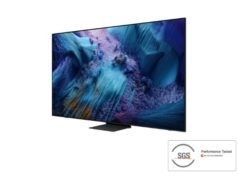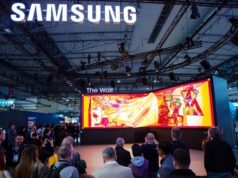
- Register
- Login
16°C
- Article
- . (0)
- Related content
An international team of researchers including Taiwan-based AU Optronics and Japan-based liquid crystal manufacturer JNC Petrochemical has developed a new blue-phase liquid crystal that could enable LCD screens to pack more pixels into the same space while reducing the power needed to run the device. The new liquid crystal is optimized for field-sequential color liquid crystal displays (LCDs), a promising technology for next-generation displays.
The developments in field-sequential color displays whereby smaller pixels can be achieved to increase resolution density is especially important in that the resolution density of today’s technology is almost at its limit, a leading member of the research team noted.
The research team was led by Shin-Tson Wu of the University of Central Florida’s College of Optics and Photonics (CREOL) who explained that while today’s Apple Retina displays have a resolution density of about 500 pixels per inch, this new new technology can achieve a resolution density of 1500 pixels per inch on the same sized screen. This is especially attractive for virtual reality headsets or augmented reality technology, which must achieve high resolution in a small screen to look sharp when placed close to our eyes, Wu stated.
A blue-phase LCD prototype was first demonstrated by Samsung in 2008, but the technology still hasn’t moved into production because of problems with high operation voltage and slow capacitor charging times. To tackle these problems, Wu’s research team collaborated to combine the new liquid crystal with a special performance-enhancing (protruded) electrode structure to achieve light transmittance of 74% with an operation voltage of 15 volts per pixel (operational levels that could finally make field-sequential color displays practical for product development).
The research team has now shown that is feasible to combine blue-phase liquid crystal with the protruded electrode structure and it is currently working with AUO to create a working prototype. Wu believes a working prototype could be available in the next year.
How it works
Today’s LCD screens contain a thin layer of nematic liquid crystal through which the incoming white LED backlight is modulated. Thin-film transistors deliver the required voltage that controls light transmission in each pixel. The LCD subpixels contain red, green and blue filters that are used in combination to produce different colors to the human eye. The color white is created by combining all three colors.
Blue-phase liquid crystal can be switched, or controlled, about 10 times faster than the nematic type. This sub-millisecond response time allows each LED color (red, green and blue) to be sent through the liquid crystal at different times and eliminates the need for color filters. The LED colors are switched so quickly that our eyes can integrate red, green and blue to form white
Wu explained that with color filters, the red, green and blue light are all generated at the same time. But with blue-phase liquid crystals, one subpixel can be used to make all three colors, but at different times. This converts space into time, a space-saving configuration of two-thirds, which triples the resolution density.
The blue-phase liquid crystal also triples the optical efficiency because the light doesn’t have to pass through color filters, which limit transmittance to about 30%. Another big advantage is that the displayed color is more vivid because it comes directly from red, green and blue LEDs, which eliminates the color crosstalk that occurs with conventional color filters.
Wu’s team worked with JNC to reduce the blue-phase liquid crystal’s dielectric constant to a minimally acceptable range to reduce the transistor charging time and get submillisecond optical response time. However, each pixel still needed slightly higher voltage than a single transistor could provide. To overcome this problem, the researchers implemented a protruded electrode structure that lets the electric field penetrate the liquid crystal more deeply. This lowered the voltage needed to drive each pixel while maintaining a high light transmittance.
The team achieved an operational voltage low enough to allow each pixel to be driven by a single transistor while also achieving a response time of less than 1 millisecond, said Haiwei Chen, a doctoral student in Wu’s lab. This delicate balance between operational voltage and response time is key for enabling field sequential color displays.



- Wireless broadband developments in Southeast Asia markets
As of 2013, the 10 ASEAN nations had a total of over 700 million mobile subscriptions, with the CAGR from 2003-2013 reaching 24%. This Digitimes Research Special Report analyzes the various mobile broadband markets in ASEAN and looks at the respective trends in 4G LTE development for those markets.
- 2015 global tablet demand forecast
This Digitimes Research Special Report provides a 2015 forecast for the global tablet market and analyzes the strategies of key market players such as Google, Apple, Intel, and Microsoft.
- 2015 China smartphone panel trend forecast
This Digitimes Research Special Report analyzes the strategies of key China-based major panel makers BOE, Tianma and IVO for attacking the different market segments through technology and pricing, and their relationship to local vendors Huawei, Lenovo, ZTE, Xiaomi and Coolpad.



![[MWC 2025] Samsung’s Mobile Technology Leadership Shines](https://loginby.com/itnews/wp-content/uploads/2025/03/1741515476_MWC-2025-Samsung’s-Mobile-Technology-Leadership-Shines-238x178.jpg)



